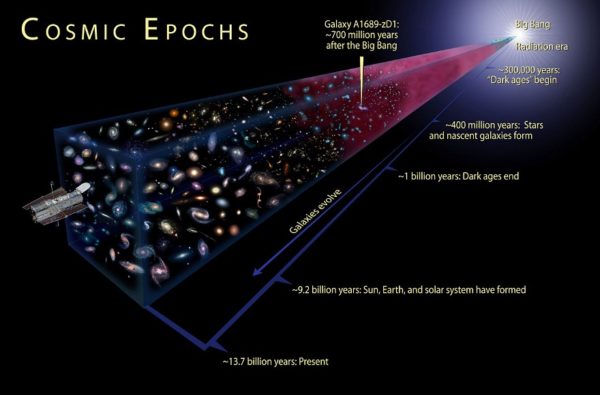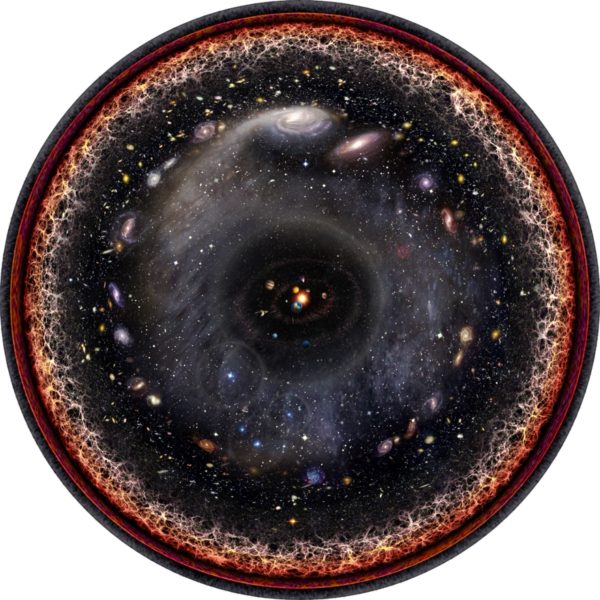"The Edge... there is no honest way to explain it because the only people who really know where it is are the ones who have gone over." -Hunter S. Thompson
When we look at the nearby Universe, it looks a lot like we, ourselves, appear. Nearby galaxies are similar in structure to our own; the stars inside them have the same properties, masses, ages and distributions as our own. But as we look to greater and greater cosmic distances, we find that more distant galaxies appear younger, bluer, smaller, and less evolved. If we go back beyond a certain point, there are no more galaxies at all.
 Nearby, the stars and galaxies we see look very much like our own. But as we look farther away, we see the Universe as it was in the distant past: less structured, hotter, younger, and less evolved. Image credit: NASA, ESA, and A. Feild (STScI).
Nearby, the stars and galaxies we see look very much like our own. But as we look farther away, we see the Universe as it was in the distant past: less structured, hotter, younger, and less evolved. Image credit: NASA, ESA, and A. Feild (STScI).
What’s going on? Does this mean that, if we go back far enough, there’s an edge to the Universe? And if so, what does that mean? What lies beyond it? And what would someone living on that edge see and perceive? It turns out that there is a boundary to our Universe, but not in space.
- Log in to post comments


Nicely & simply laid out, Ethan.
:)
I'm ur biggest fan also why are u so amazing